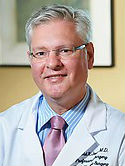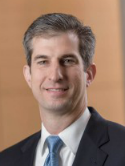Prospective study of giant paraesophageal hernia repair with 1-year follow-up Journal Article
| Authors: | Stringham, J. R.; Phillips, J. V.; McMurry, T. L.; Lambert, D. L.; Jones, D. R.; Isbell, J. M.; Lau, C. L.; Kozower, B. D. |
| Article Title: | Prospective study of giant paraesophageal hernia repair with 1-year follow-up |
| Abstract: | Objective Evaluating giant paraesophageal hernia (GPEH) repair requires long-term follow-up. GPEH repair can have associated high recurrence rates, yet this incidence depends on how recurrence is defined. Our objective was to prospectively evaluate patients undergoing GPEH repair with 1-year follow-up. Methods Patients undergoing elective GPEH repair between 2011 and 2014 were enrolled prospectively. Postoperatively, patients were evaluated at 1 month and 1 year. Radiographic recurrence was evaluated by barium swallow and defined as a gastroesophageal junction located above the hiatus. Quality of life was evaluated pre- and postoperatively with the use of a validated questionnaire. Results One-hundred six patients were enrolled. The majority of GPEH repairs were performed laparoscopically (80.2%), and 7.5% were redo repairs. At 1-year follow-up, 63.4% of patients were symptom free, and radiographic recurrence was 32.7%. Recurrence rate was 18.8% with standard definition (>2 cm of stomach above the diaphragm). Quality of life scores at 1 year were significantly better after operative repair, even in patients with radiographic recurrence (7.0 vs 22.5 all patients, 13.0 vs 22.5 with recurrence; P <.001). Patients with small radiographic recurrences have similar satisfaction and symptom severity to patients with >2 cm recurrences. Conclusions GPEH repair can be performed with low operative mortality and morbidity. The rate of recurrence at 1 year depends on the definition used. Patient satisfaction and symptom severity are similar between patients with radiographic and greater than 2 cm hernia recurrences. Longer follow-up and critical assessment of our results are needed to understand the true impact of this procedure and better inform perioperative decision making. © 2017 The American Association for Thoracic Surgery |
| Keywords: | laparoscopy; recurrence; outcomes research; long-term outcomes; paraesophageal hernia |
| Journal Title: | Journal of Thoracic and Cardiovascular Surgery |
| Volume: | 154 |
| Issue: | 2 |
| ISSN: | 0022-5223 |
| Publisher: | Mosby Elsevier |
| Date Published: | 2017-08-01 |
| Start Page: | 743 |
| End Page: | 751 |
| Language: | English |
| DOI: | 10.1016/j.jtcvs.2017.03.138 |
| PROVIDER: | scopus |
| PUBMED: | 28502624 |
| PMCID: | PMC5659114 |
| DOI/URL: | |
| Notes: | Conference Paper -- Read at the 96th Annual Meeting of The American Association for Thoracic Surgery, which took place in Baltimore, MD 2016 May 14-18 -- Export Date: 1 November 2017 -- Source: Scopus |
Altmetric
Citation Impact
BMJ Impact Analytics
Related MSK Work





